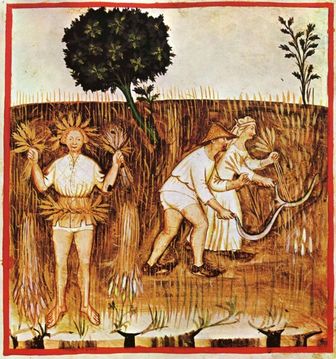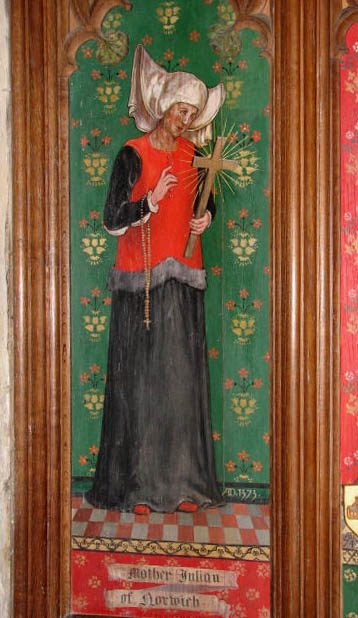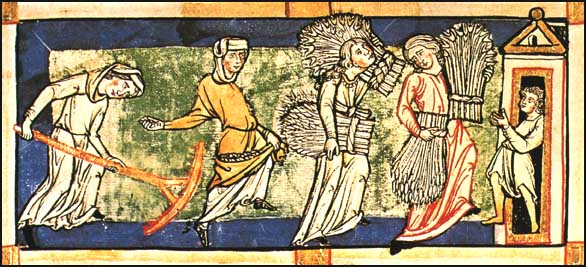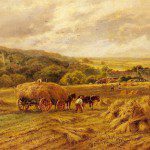 Last year at this time I was planting my first garden in California, this year I’m in the middle of harvesting from that very same garden. My garden doesn’t have a lot of variety to it, but the little I’ve been able to coax out of it has been wondrous. My wife and I are now awash in tomatoes (so many tomatoes!) and very soon I expect to be cooking with an abundance of chili peppers (I’m also really excited about the ghost peppers in a few weeks!). Some of the things growing in my garden are more ornamental than practical. I love sunflowers for instance, and while I guess it’s possible I could harvest the seeds I mostly just like seeing the flowers in my backyard.
Last year at this time I was planting my first garden in California, this year I’m in the middle of harvesting from that very same garden. My garden doesn’t have a lot of variety to it, but the little I’ve been able to coax out of it has been wondrous. My wife and I are now awash in tomatoes (so many tomatoes!) and very soon I expect to be cooking with an abundance of chili peppers (I’m also really excited about the ghost peppers in a few weeks!). Some of the things growing in my garden are more ornamental than practical. I love sunflowers for instance, and while I guess it’s possible I could harvest the seeds I mostly just like seeing the flowers in my backyard.
This time of year has many names. In Pagan circles the most common might be Lughnasadh, or possibly Lughnassa. Another name is First Fruits which seems especially fitting on a personal level. Two weeks ago I plucked the first edible tomato from my garden, but by August 2 I expect a flood of abundance. While First Fruits is especially descriptive right now the word I’ve always preferred is Lammas. That’s mostly because it’s the easiest of the three to spell and pronounce, but it’s also because the earliest Modern Witches used that name as well. Some Pagans dislike my use of the word Lammas because it’s the Christian name for August 1, but Lammas was never really a Christian holiday.
 The backstories of the four “greater sabbats” (Samhain, Imbolc, Beltane, and Lammas) have always been a bit difficult to trace. All four holidays were most certainly celebrated by the Ancient Celts, but after that things get hazy. It’s probably fair to say that all four holidays contain a “certain feeling,” a feeling that has survived and been handed down for thousands of years. The Celtic Lughnasadh was a celebration of the first harvest and may have included games and perhaps a symbolic cutting of the grain but it’s impossible to know for sure. The descriptions we have of Lughnasadh are all post-Christian and many of the things we might associate with the holiday were only documented during the Nineteenth Century, though it’s highly probably they are far older than that.
The backstories of the four “greater sabbats” (Samhain, Imbolc, Beltane, and Lammas) have always been a bit difficult to trace. All four holidays were most certainly celebrated by the Ancient Celts, but after that things get hazy. It’s probably fair to say that all four holidays contain a “certain feeling,” a feeling that has survived and been handed down for thousands of years. The Celtic Lughnasadh was a celebration of the first harvest and may have included games and perhaps a symbolic cutting of the grain but it’s impossible to know for sure. The descriptions we have of Lughnasadh are all post-Christian and many of the things we might associate with the holiday were only documented during the Nineteenth Century, though it’s highly probably they are far older than that.
When picturing what an ancient Lammas celebration might have looked like my mind always drifts towards life in a medieval village, and rightfully so. As a celebration the heyday of Lammas was most certainly the Middle Ages. My romanticized visions of Lammas tend to involve offerings of grain to the Goddess and the ringing of a bell with the first ripening of grain. It would be great if those sort of things happened in the pagan past but they most likely did not, but that doesn’t mean a Lammas celebration in Christian Britain was all that Christian. In fact Christianity before the Protestant Reformation and the Catholic Counter-Reformation wasn’t really all that Christian to begin with. Certainly the Lammas revelers of the medieval era would have self-identified as Christians, but their practice of Christianity would be all but unrecognizable to modern adherents of that faith. It would also look a lot more like some of the things we Pagans would do.
 Often lost in the arguments about Christo-Paganism is that it mostly existed in many parts of Europe during the Middle Ages. Sometimes we Pagans overstate the case a little bit; not every church or monastery was built on the ruins of a pagan holy place, and only a small handful of saints were re-imaginings of pagan deities, but that doesn’t mean there weren’t pagan elements in other places. For me the adoption of Christianity by my ancient pagan brothers and sisters has been one of history’s great mysteries. Why would anyone knowingly replace the living wood of the maypole with the dead carpentry of the cross? But what if the Christianity that replaced those ancient paganisms mostly applied a new coat of paint over top of old and established practices?
Often lost in the arguments about Christo-Paganism is that it mostly existed in many parts of Europe during the Middle Ages. Sometimes we Pagans overstate the case a little bit; not every church or monastery was built on the ruins of a pagan holy place, and only a small handful of saints were re-imaginings of pagan deities, but that doesn’t mean there weren’t pagan elements in other places. For me the adoption of Christianity by my ancient pagan brothers and sisters has been one of history’s great mysteries. Why would anyone knowingly replace the living wood of the maypole with the dead carpentry of the cross? But what if the Christianity that replaced those ancient paganisms mostly applied a new coat of paint over top of old and established practices?
When I picked up Ronald Hutton’s Pagan Britain last Spring the first chapter I read was The Conversion to Christianity: A Clash of Religions, A Blend of Religions. I started there because it’s the era of ancient British paganism I know the least about. I was hoping to get some answers to the conversion mysteries that have so perplexed me over the last twenty years, and Hutton delivered. Hutton writes
“There is a parallel exercise to be made, in suggesting that medieval British Christianity matched paganism is so many structural respects that it provided a readily adopted substitute for it.”
Certainly medieval Christianity changed society, some for the good (yay to outlawing sex-slaves) and some for the bad (boo to making annulments far more difficult), but many of the strengths of ancient paganisms were included in the new religion.
 In my own mind I usually define Modern Paganism as consisting of three traits: polytheism (or the language of polytheism), seasonal rites and rituals, and an acknowledgement of the divine feminine. Interestingly enough medieval Christianity did all of these things to varying degrees. I think most pagans know that certain versions of Christianity are only nominally monotheistic, but this was especially true one thousand years ago. Christianity was full of saints-of both sexes-and those saints were generally the intermediaries between this world and the next. It’s not an exaggeration to argue that the extensive and varied pantheons of ancient paganisms were simply replaced by an equally extensive and varied collection of Christian Saints.
In my own mind I usually define Modern Paganism as consisting of three traits: polytheism (or the language of polytheism), seasonal rites and rituals, and an acknowledgement of the divine feminine. Interestingly enough medieval Christianity did all of these things to varying degrees. I think most pagans know that certain versions of Christianity are only nominally monotheistic, but this was especially true one thousand years ago. Christianity was full of saints-of both sexes-and those saints were generally the intermediaries between this world and the next. It’s not an exaggeration to argue that the extensive and varied pantheons of ancient paganisms were simply replaced by an equally extensive and varied collection of Christian Saints.
Saints functioned much like pagan deities, with each saint responsible for one or several areas of human life. A prayer might be made to the saint of colds during an illness, and another prayer to a saint of place (like one protecting a well). People also chose personal saints and were devoted to them much like some Pagans today are devoted to particular deities. I’m not arguing that every facet of human life was covered by the saints of the medieval era (it’s hard to replace gods like Dionysus and Pan) but the basic necessities were all articulated.
Hutton also writes in Pagan Britain that: “Medieval British Christianity also resembled the older religions in the space that it provided for women.” Some of those spaces are obvious to most of us: the female saints and the Virgin Mary functioning as a heavenly queen, but there are other things worth pointing out. The medieval period featured female Christian mystics (Lady Julian of Norwich perhaps being the most famous) and women were also a part of many guilds, often on an equal basis with men. I’m certainly not arguing that medieval Christianity was the paragon of equality, but in many respects it wasn’t much worse than the ancient paganisms it replaced.
Most importantly for this discussion was the emphasis placed on seasonal rituals. During the Middle Ages church attendance on Sundays was poor to non-existent, religious observance was mostly reserved for seasonal celebrations, many of those taken directly from the paganisms Christianity replaced. Lammas was one of those celebrations, and it was full of magic, folklore, and awe just like it is today. It’s possible to remove pagan deities from society, but it’s impossible to remove pagan yearnings. Even separated from the natural world like so many of us are today, there’s still a desire to celebrate seasonal rituals and give thanks to the earth for our continued existence.
This Friday night when I break bread with my coven and give thanks to the Earth and the gods for Summer’s first fruits I won’t be dwelling on whether or not the celebration of Loaf-mass is a Christian or a Pagan one. I will be reflecting on the chain of beliefs that links me to my nominally Christian ancestors in the Middle Ages and my pagan ancestors before them. Over the last two thousand years some have tried to break that chain but the sabbats have always been far too strong for that.
________
The last part of this article quotes Professor Ronald Hutton in several places. In addition the paragraphs on the saints as polytheism, the role of women and goddess, and the celebration of seasonal festivals in the church also come from Hutton’s Pagan Britain, published by Yale University Press in 2014 and appears on pages 335-339.


















